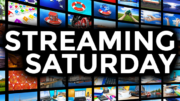The other day I was watching a movie on Max, my new favorite channel to complain about. (Let’s say they still have a bit of work to do on their app and leave it at that.) I have a fairly decent and modern home theater system with enough power to meet my needs. It’s pretty rare that I need to turn it up higher than -30 (I’ll explain that number in a minute) even if I really want to rock out.
On this particular film I ended up turning the volume up to -5. This is one of those home theater receivers that will actually go up to +10 if you’re willing to put up with some distortion. Still, it’s pretty rare that I ever have to turn it up even close to that high.
So what gives?
Probably an Atmos thing
Dolby Atmos is the latest and greatest surround technology. It allows for up to 128 tracks of audio where previous systems topped out at 9 (7 primary and 2 bass tracks.) No one expects you to have 128 speakers, though. What it does is takes the locations of your speakers in 3D space and uses fancy computer trickery to simulate the speakers you don’t have. Depending on your home system you can hook up as many speakers as you want and it will do the rest.
I’m figuring that Dolby Atmos just didn’t know what to do with my home sound system. It’s not that different from the one you might have, but for whatever reason I think that some audio data was being lost. That theory fits the facts because the audio was also a little distorted, as if the “spatializer” tech wasn’t doing its job right.
Forcing a downmix to 5.1 audio didn’t really fix the problem though, so I’m still at a bit of a loss. It’s just been two or three movies in the last few years with this sort of problem, so I don’t think about it until…
…inevitably I go to another streaming app or to live TV.
As soon as I go to another app or to live TV, my sound system comes back in a big way. -14 is almost painfully loud on most channels, especially live TV where the sound level is best with the receiver at about -35 to -40.
And this, in turn, makes me scream, whether it’s Saturday or some other day.
The problem is particularly bad with streaming. In decades past, pay-TV providers worked very hard to balance the volume between channels. They also worked equally hard, thanks to actual federal laws, to make sure that commercials weren’t louder than everything else. I’m not saying everything is perfect on pay-TV, but it’s nowhere near as bad as it is with streaming.
It seems like every streaming app has its own idea of what constitutes the “right” volume level. Some are a lot louder than others. Within apps, the differences can be obvious between movies and programs that used to air on pay-TV. Which brings me back, inevitably, to my old favorite punching bag Max.
A quick drive-by jab at Max
After being a tad too quick to jump down their throats on day 1, I’m trying to give Max a little time to repair its app. I’m a little cranky about the fact that the old HBO Max app was working nigh on perfectly and the new one is a hot mess (at least on Apple TV.) But fixing things takes time especially when you’ve fouled them up as bad as they have.
Still, I can’t help pointing out that this audio problem occurred on Max, and that app was coded by the same people who coded the original Discovery+ app. That app had major volume problems at launch. Programs were 8 – 10dB too loud. Even when I finally deleted it a month or so ago it was a few dB too loud. Now it seems like some of the programs are too soft, and I have to wonder if they just went too far.
Oh, and about those volume numbers.
This is the part of the article where I explain why my volume numbers were -30 and such. If you understand this part, that’s cool, I promise I’ll have more streaming news next week. If you think you can explain it better than I have, please leave comments. I’m always trying to find new ways to get this stuff out there.
When you’re talking about high-quality audio, you want to avoid the distortion that comes from varying the amount of amplification you provide. So, most home theater receivers only operate at one level of amplification: maximum. Left alone, they would be blasting everything as loud as they could.
Obviously that wouldn’t work very well for anyone. So, the way volume is controlled is by adding a “pad,” also called an attenuator, to the signal after it’s amplified. That’s right, it’s amplified to full volume and then masked down to the level you need it to be.
So, the volume numbers are always negative, because they represent how much volume you’re getting compared to full volume. They’re measured in decibels or dB, which turn out to be very hard to explain. I know, I’ve tried. In truth, when you’re turning the volume down to -30, you’re reducing the volume to 1/100th of its total power. But humans don’t perceive sound the way scientists measure it, so you’re more likely to think it’s more like about 1/3 as loud as it could be.





